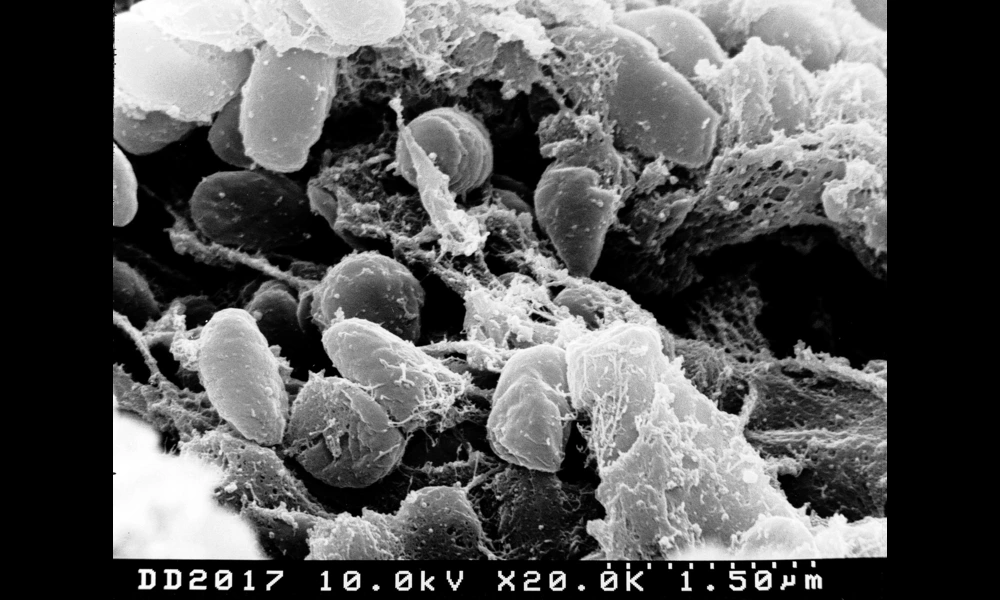Enzymes Found to Regulate Severity for Izumi Fever Bacterium, Offering Novel Antimicrobial Strategy Insights
Published on Thu Jan 11 2024 File:Yersinia pestis scanned with electron micrograph.jpg | Ww2censor on Wikimedia
File:Yersinia pestis scanned with electron micrograph.jpg | Ww2censor on WikimediaIn a recent study that has significant implications for the development of novel antimicrobial strategies, scientists have uncovered how certain enzymes act as double-edged swords in Yersinia pseudotuberculosis, a pathogen responsible for causing a range of gut-associated diseases, for example Far East scarlet-like fever. The researchers from German universities, provide deep insights into the bacterial machinery that controls the expression of its virulence factors (impacts the severity of the disease), namely the type III secretion systems (T3SS) and Yop proteins, which are crucial for the pathogen's ability to evade and manipulate host immune responses.
The researchers meticulously investigated a set of ribonucleases (RNases), enzymes responsible for RNA degradation, to decipher their roles in managing the bacterium's virulence traits. Of particular interest were RNase III and polynucleotide phosphorylase (PNPase), which were found to play crucial roles in modulating the synthesis of LcrF, the master regulator controlling the T3SS/Yop virulence apparatus. Astonishingly, the absence of these enzymes not only induced a major shift in the bacterium's gene expression profile from chromosomal to virulence plasmid-encoded genes but also resulted in increased synthesis and secretion of Yop proteins, even under conditions where this would not normally happen.
This RNase-mediated regulation unravelled by the study highlights a sophisticated mechanism employed by Y. pseudotuberculosis to fine-tune its virulence based on environmental cues, such as temperature and host cell contact, which signal the bacterium to either engage in or desist from aggressive host immune system manipulation. The work emphasizes the significance of RNase III in coordinating these virulence traits with the bacterium’s overall physiological needs, ensuring the optimal allocation of resources towards survival and proliferation within the host.
Notably, the study points towards a novel perspective on bacterial virulence control, opening avenues for the development of therapeutic interventions aimed at disrupting these regulatory mechanisms. By targeting the RNase-mediated pathways critical for the expression of virulence factors, it may be possible to disarm pathogenic bacteria without affecting their viability, potentially reducing the likelihood of resistance development compared to traditional antibiotics.
The research, while focused on Y. pseudotuberculosis, also sheds light on the broader understanding of bacterial pathogenesis and immune evasion strategies, offering promising leads for tackling other pathogens armed with T3SS and similar virulence mechanisms. As the battle against antimicrobial resistance intensifies, insights such as those provided by Meyer and her colleagues are invaluable, guiding the way towards innovative approaches in infectious disease control and prevention.



